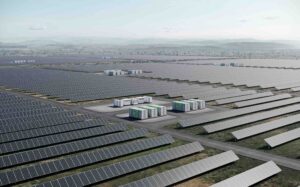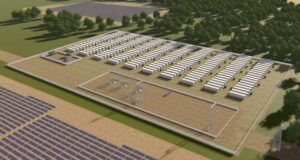The Australian Energy Market Operator has ticked off one of the key anticipated challenges of operating the grid with 100 per cent renewables as it works through the engineering tasks needed to transition away from coal and fossil gas.
A series of technical reports released last week provide an update on some of essential “grid services” that are required to meet grid stability and keep the lights on, quite apart from the question of how much wind and solar might be needed to meet demand.
Traditional grids have relied on big centralised fossil fuel generators and their spinning machines to deliver essential services such as system strength, inertia and voltage control – all essential elements of keeping the grid stable.
Shifting to inverter bases resources such as wind, solar and battery storage has presented a new engineering challenge – understanding how these technologies can provide the same services, and to create the market incentives to ensure they are made available to the grid.
As AEMO market operator Daniel Westerman has described it, making the switch is like flying a plane and changing the engines mid-flight. Remarkably, and against all predictions from the naysers, they are finding solutions to do exactly that.
AEMO has been preparing to accommodate at least short periods on the grid where renewables meet 100 per cent of demand needs by 2025, and its engineering map has set detailed plans on how to approach them.
Its latest annual assessment of Network Support and Control Ancillary Services contains some good news, particularly on voltage control, one of the key elements of a stable grid.
Last year, AEMO fretted that it would need to invest to resolve voltage control challenges, but its latest assessment says that operating the country’s main grid, the National Electricity Market at 100 per cent renewables, even at periods of high demand, does not present any issues on this front.
That’s because the new capacity from wind, solar and battery installations, which all feature inverters, many of them grid forming inverters, can provide that particular service. “Voltage control needs have been largely met by the additional reactive capabilities of IBR investment,” it notes.
One concern is how to manage significant “ramping” events, such as when passing cloud might remove 570MW of rooftop solar output in western Sydney, effectively adding that much new demand on the grid, or a similar situation in Brisbane or a sudden drop in wind output in South Australia.
Its modelling identifies no thermal or voltage limit violations, but its studies do point to the need for more automated (dynamic) reactive plant, and particularly in leveraging the controllable reactive capabilities of new IBR (inverter-based) connections.
AEMO says the most “onerous” challenge may be the provision of system strength, and it identifies the need for at 45 large “synchronous condensers” across the grid to fill the gap caused by the closure of the country’s coal fleet.
Around half of that demand for syncons is likely to be met by grid forming inverters, attached to either batteries or wind and solar farms (nixing the very idea that these technologies will necessarily destabilise the grid), but more may be needed.
AEMO says the current waiting time for syncons – large spinning machines that do not burn fuel – is around five years, so alternatives might be needed. These could include repurposing shuttered coal generators to use just their spinning machines , and flywheels may also be needed to address specific inertia issues.










